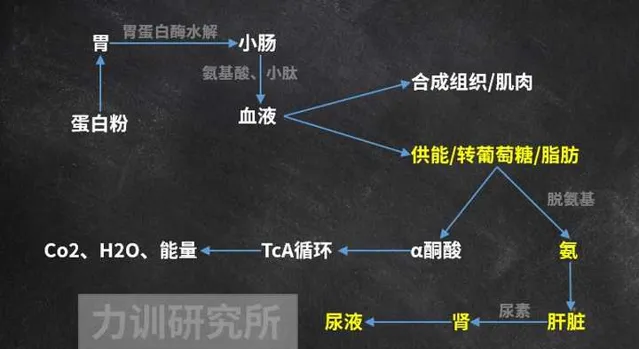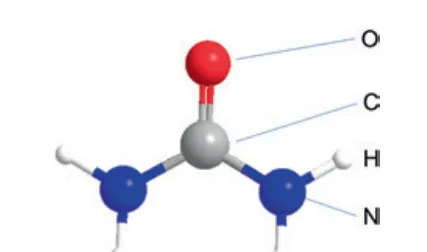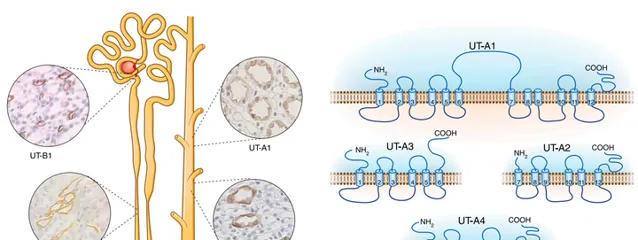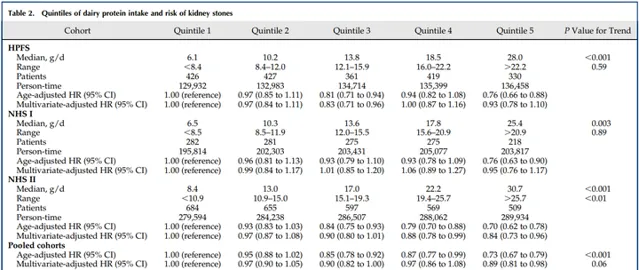
『蛋白粉伤肾』是没有科学依据的,属于未经证实的谣言。因为蛋白质并不由肾脏排泄,肾脏排出的是尿素;而尿素是一种极易排出的小分子,排泄不产生负担 一、 蛋白粉/蛋白质不经肾脏排泄
现在网上有些人张口就是「蛋白粉伤肾」、「增加肾脏负担」之类的话。


我搞不懂的是,这都2022年了,怎么还会有这种观点呢?生理学告诉我们, 肾不会排出膳食蛋白质,肾排泄的是尿素:
这其实在我们之前的文章中解释过:
用图形表示,就是这样的:

也就是说,吃下去的蛋白质,只有 部分 用于供能,最后代谢为二氧化碳、水和尿素,后者从肾脏排出,哪来的蛋白质让肾脏过滤/排泄?以我对杠精的了解,它们又会编:「排出尿素也会增加肾脏负担」,所以我们接下来讲讲尿素。
二、尿素排泄对肾脏有负担吗?
尿素是一种无色无味的中性分极小子,总体上不影响血液酸碱性 [9] [10] [11] 。

尿素分子分非常小,具有很高水溶性的 [12] ,极易随体液排出体外。除了尿液,人类还通过汗液 [13] 、眼泪 [14] 、唾液 [15] [16] 和粪便 [17] [18] [19] 排出尿素。
注意, 尿素太容易排出体外,人反而要努力留住它, 因为它能调节渗透压,留下尿素可以留下很多水分,减少水分排泄,浓缩尿液 [20] [21] [22] [23] ,从而帮助我们生存;人挽留尿素靠尿素转运蛋白Urea Transporter ,简称UT。
UT有A、B等大类 [24] ,在肾脏、心脏、脑、睾丸、泌尿系统等组织中有较广泛的分布。UT-B在大脑中大量存在,因为大脑中也含有较多尿素 [25] [26] 。UT-A又分了多种,有A1、A2、A3等。UT-A1一般分布在肾髓内集合管(IMCD)细胞的顶端膜上,它们能我们快速吸收尿素。

尿素多了,渗透压上升,水分被回收 [27] [28] 、尿液浓缩。这在演化上也说得通,因为水是宝贵的生存资源。
不仅人类,许多其他哺乳动物也是如此,Bankir等人使用有基因特征的小鼠模型进行研究 [29] ,它们体内不能产生尿素转运蛋白B(UT-B)。进食高蛋白食物后,正常小鼠血液尿素水平提高了44%,而UTB缺陷小鼠的尿素浓度没有增加
为啥没增加?排泄出去了。
随饮食中蛋白质的比例从10%增加到40%,UT-B基因缺陷小鼠的尿素排泄量增加了 5倍 。多项类似研究也得到了类似结果 [30] [31] [32] ,支持Bankir等人的结论,证明了尿素具有「易排泄,难保留」的特性。
因此『肾脏排泄尿素有压力』,又是凭空编造的谣言。
三、乳制品蛋白能降低肾结石几率
有许多大型研究支持这样的观点,即乳制品蛋白质能降低肾结石发病率。
例如Pietro等人 [33] 对健康专业人员研究(42919人)、美国护士健康研究I(60128人)和护士健康研究II(90629人)的数据进行了分析,摄入奶制品蛋白导致结石风险降低26%。
注意,如果多摄入非乳制品动物蛋白,男性患肾结石的风险显著升高。

也就是说,乳制品和乳清蛋白粉与肉类的健康效果存在差异,肉类可能对肾结石有促进作用,而乳制品和乳清蛋白粉可能对肾结石有一定程度的保护作用。
扩展阅读
肉崽:力训研究所课程介绍
不健身直接吃蛋白粉会怎么样?
为什么减脂容易掉肌肉?
当代年轻人为什么尿酸会高?
参考
- ^ a b Brosnan, J.T. Interorgan amino acid transport and its regulation. J. Nutr.133:2068S2072S, 2003.
- ^ Jungas, R.L, M.L. Halperin, and J.T. Brosnan. Qualitative analysis of amino acid oxidation and related gluconeogenesis in humans. Physiol. Rev. 72:419-448, 1992.
- ^ Havir EA, Tamir H, Ratner S, Warner RC (1965) Biosynthesis of urea XI. Preparation and properties of crystalline argininosuccinase. J Biol Chem 240:3079–3088
- ^ Hoberman HD, Havir EA, Rochovansky O, Ratner S (1964) Biosynthesis of urea X. Stereospecificity of the argininosuccinase reaction. J Biol Chem 239:3818–3820
- ^ Dimski DS (1994) Ammonia metabolism and the urea cycle: function and clinical implications.J Vet Intern Med 8:73–78
- ^ Meijer AJ, Lamers WH, Chamuleau R (1990) Nitrogen metabolism and ornithine cycle function. Physiol Rev 70:701–748
- ^ Lusty C, Ratner S (1972) Biosynthesis of urea XIV. The quaternary structure of argininosuccinase. J Biol Chem 247:7010–7022
- ^ Petrack B, Ratner S (1958) Biosynthesis of urea VII. Reversible formation of argininosuccinic acid. J Biol Chem 233:1494–1500
- ^ Bjerrum K, Vilstrup H, Almdal T, Ostergaard L (1990) No effect of bicarbonate-induced alkalosis on urea synthesis in normal man. Scand J Clin Lab Invest 50:137–141
- ^ Boon L, Blommaart PJ, Meijer AJ, Lamers WH, Schoolwerth A (1994) Acute acidosis inhibits liver amino acid transport: no primary role for the urea cycle in acid–base balance. Am J Physiol Renal Physiol 267:F1015–F1020.
- ^ Boon L, Blommaart PJ, Meijer AJ, Lamers WH, Schoolwerth AC (1996) Response of hepatic amino acid consumption to chronic metabolic acidosis. Am J Physiol271:F198–F202
- ^ Fenton R. A. (2008). Urea transporters and renal function: lessons from knockout mice. Curr. Opin. Nephrol. Hypertens. 17, 513–51810.
- ^ Schwartz IL, Thaysen JH, Dole VP (1953) Urea excretion in human sweat as a tracer for movement of water within the secreting gland. J Exp Med 97:429–437
- ^ Thaysen JH, Thorn NA (1954) Excretion of urea, sodium, potassium and chloride in human tears. Am J Physiol 178:160–164
- ^ Albrectsen SR, Thaysen JH (1955) The excretion of urea by the human parotid gland. Scand J Clin Lab Invest 7:231–238
- ^ Carco P, Canciullo D (1958) Urea excretion through the human salivary glands. Ann Otol Rhinol Laryngol 67:1050–1065
- ^ Bliss DZ, Stein TP, Schleifer CR, Settle RG (1996) Supplementation with gum arabic fiber increases fecal nitrogen excretion and lowers serum urea nitrogen concentration in chronic renal failure patients consuming a low-protein diet. Am J Clin Nutr 63:392–39
- ^ Brown RL, Gibson JA, Fenton JC, Snedden W, Clark ML, Sladen GE (1975) Ammonia and urea transport by the excluded human colon. Clin Sci Mol Med 48:279–287
- ^ Skala I, Mareckova O, Ruzickova J, Blaha J, Strakova M, Reneltova I, Jirka J, Kocandrle V, Zvolankova K (1978) Urea and ammonia excretion into gastric juice in regularly dialyzed patients and patients after renal transplantation. I Dialyzed patients. Czech Med 1:180–19020. Havir EA, Tamir H, Ratner S, Warner RC (1965) Biosynthesis of urea XI. Preparation and properties of crystalline argininosuccinase. J Biol Chem 240:3079–3088
- ^ Norifumi Konno 1 , Susumu Hyodo, Kouhei Matsuda, Minoru Uchiyama.Effect of osmotic stress on expression of a putative facilitative urea transporter in the kidney and urinary bladder of the marine toad, Bufo marinus.J Exp Biol.2006 Apr;209(Pt 7):1207-16.
- ^ Luis Marcelo F. Holthauzen, J?rg R?sgen*?, and D. Wayne Bolen*.Hydrogen Bonding Progressively Strengthens upon Transfer of the Protein Urea-Denatured State to Water and Protecting Osmolytes.Biochemistry 2010, 49, 6, 1310–1318.
- ^ Chou C. L., Knepper M. A. (1989). Inhibition of urea transport in inner medullary collecting duct by phloretin and urea analogues. Am. J. Physiol. 257, F359–F365
- ^ Sands J. M. (2002). Molecular approaches to urea transporters. J. Am. Soc. Nephrol. 13, 2795–280610.
- ^ You G., Smith C. P., Kanai Y., Lee W. S., Stelzner M., Hediger M. A. (1993). Cloning and characterization of the vasopressin-regulated urea transporter. Nature 365, 844–84710.
- ^ Buniatian H. C., Davtian M. A. (1966). Urea synthesis in brain. J. Neurochem. 13, 743–75310.
- ^ Couriaud C., Ripoche P., Rousselet G. (1996). Cloning and functional characterization of a rat urea transporter: expression in the brain. Biochim. Biophys. Acta 1309, 197–199
- ^ Lei T., Zhou L., Layton A. T., Zhou H., Zhao X., Bankir L., Yang B. (2011). Role of thin descending limb urea transport in renal urea handling and the urine concentrating mechanism. Am. J. Physiol. Renal Physiol. 301, F1251–F125910.
- ^ Yang B., Bankir L. (2005). Urea and urine concentrating ability: new insights from studies in mice. Am. J. Physiol. Renal Physiol. 288, F881–F89610.
- ^ Lise Bankir, Kai Chen, Baoxue Yang.Lack of UT-B in vasa recta and red blood cells prevents urea-induced improvement of urinary concentrating ability.Am J Physiol Renal Physiol. 2004 Jan;286(1):F144-51.
- ^ Yang B., Bankir L. (2005). Urea and urine concentrating ability: new insights from studies in mice. Am. J. Physiol. Renal Physiol. 288, F881–F89610.
- ^ Lei T., Zhou L., Layton A. T., Zhou H., Zhao X., Bankir L., Yang B. (2011). Role of thin descending limb urea transport in renal urea handling and the urine concentrating mechanism. Am. J. Physiol. Renal Physiol. 301, F1251–F125910.
- ^ Berger U. V., Tsukaguchi H., Hediger M. A. (1998). Distribution of mRNA for the facilitated urea transporter UT3 in the rat nervous system. Anat. Embryol. 197, 405–41410.
- ^ Ferraro PM, Mandel EI, Curhan GC, Gambaro G, Taylor EN (2016) Dietary protein and potassium, diet-dependent net acid load, and risk of incident kidney stones. Clin J Am Soc Nephrol 11:1834–1844











